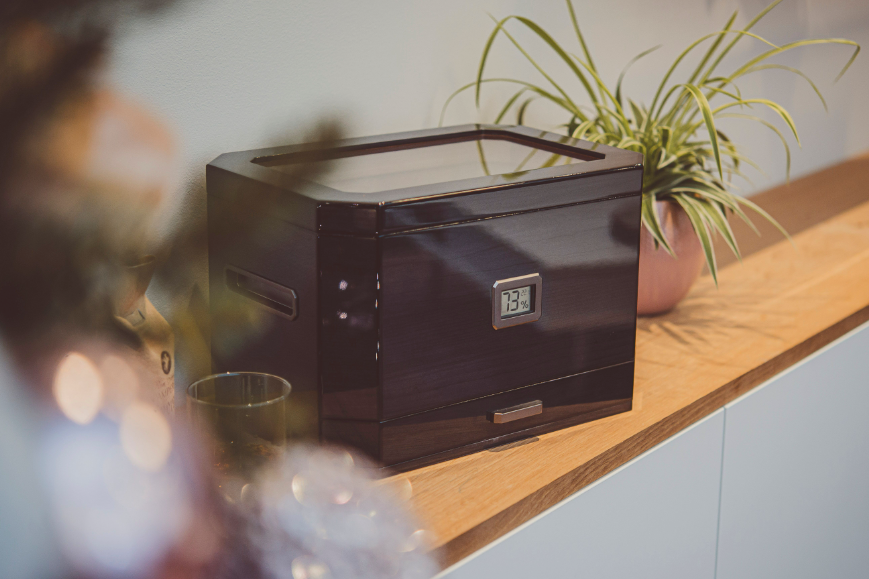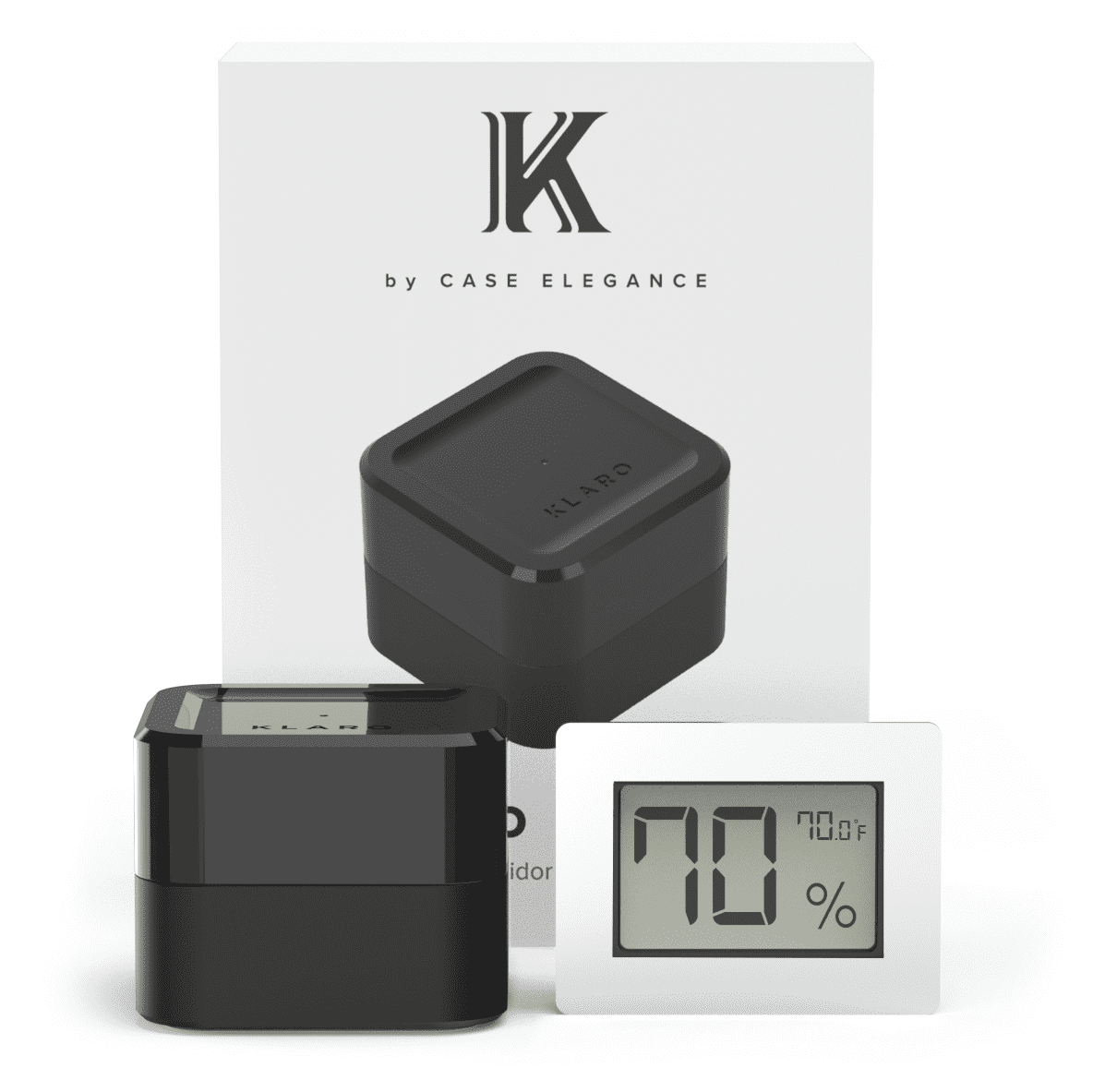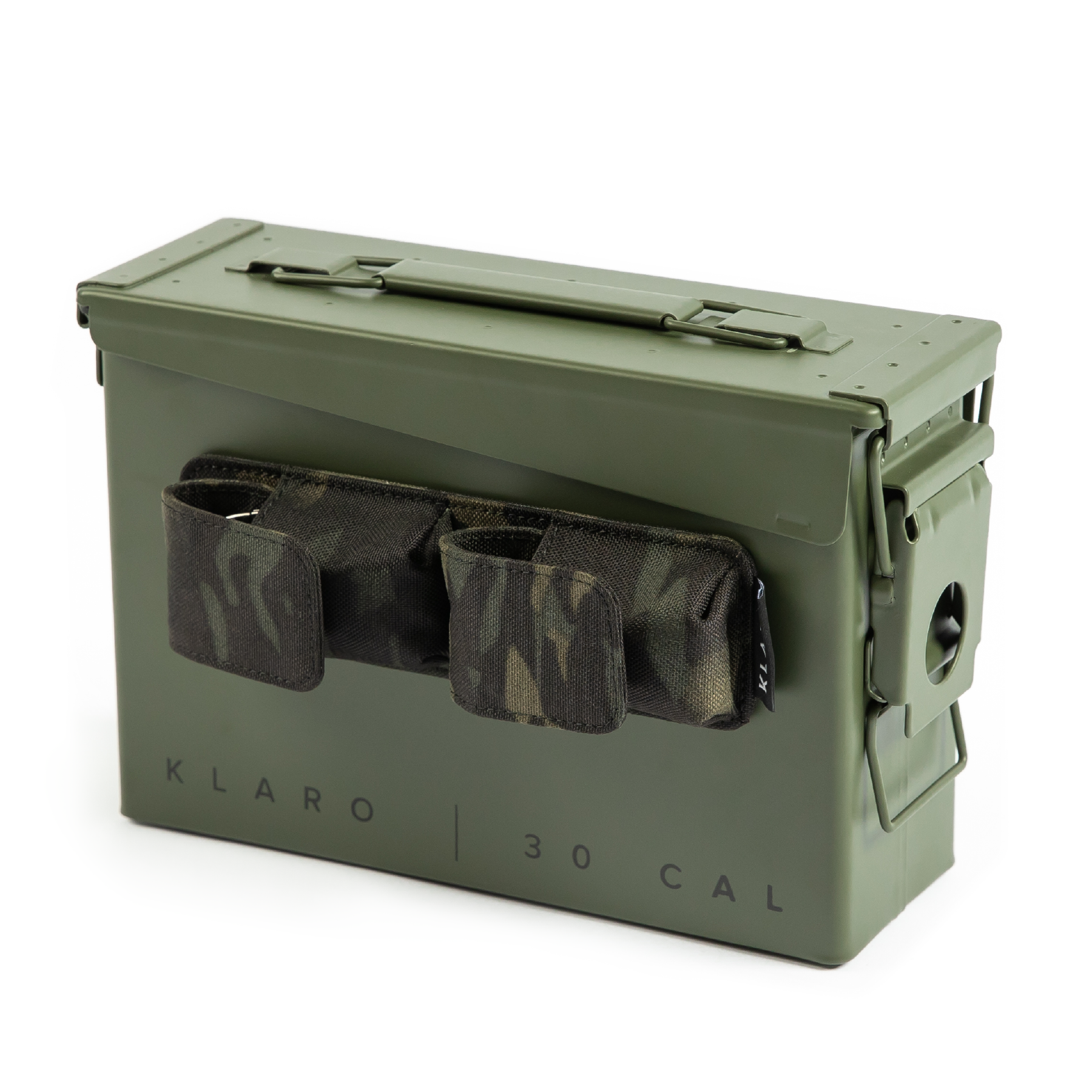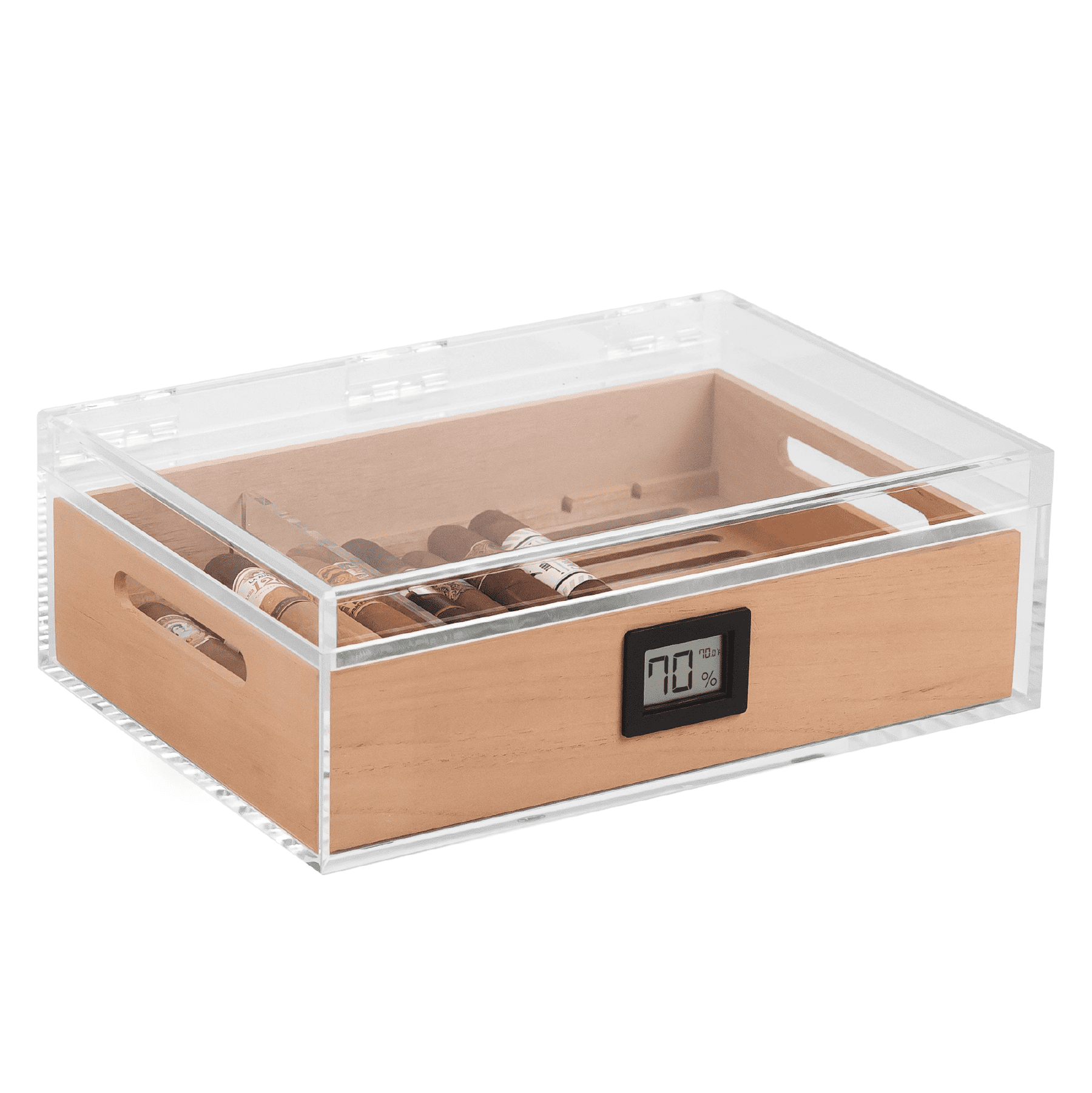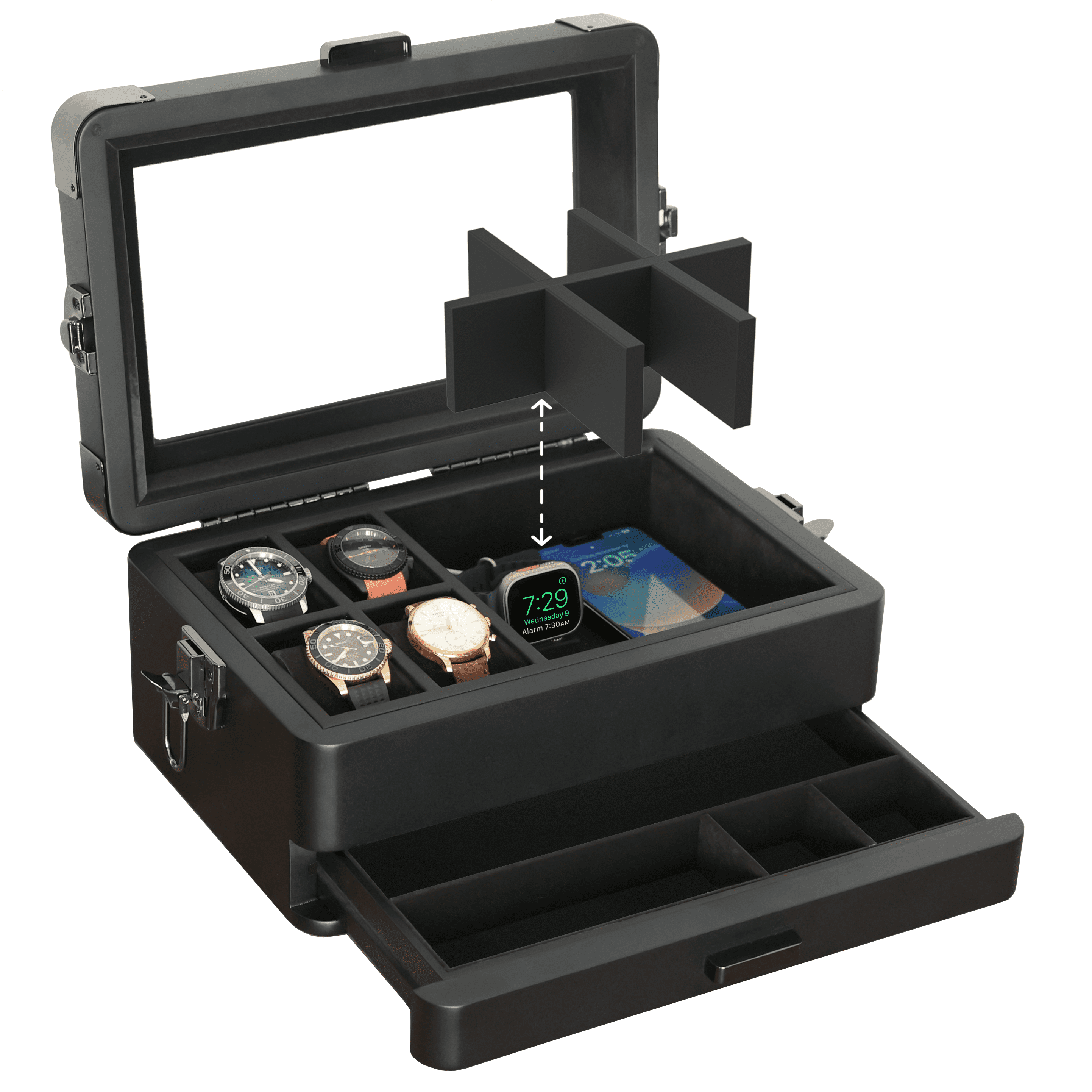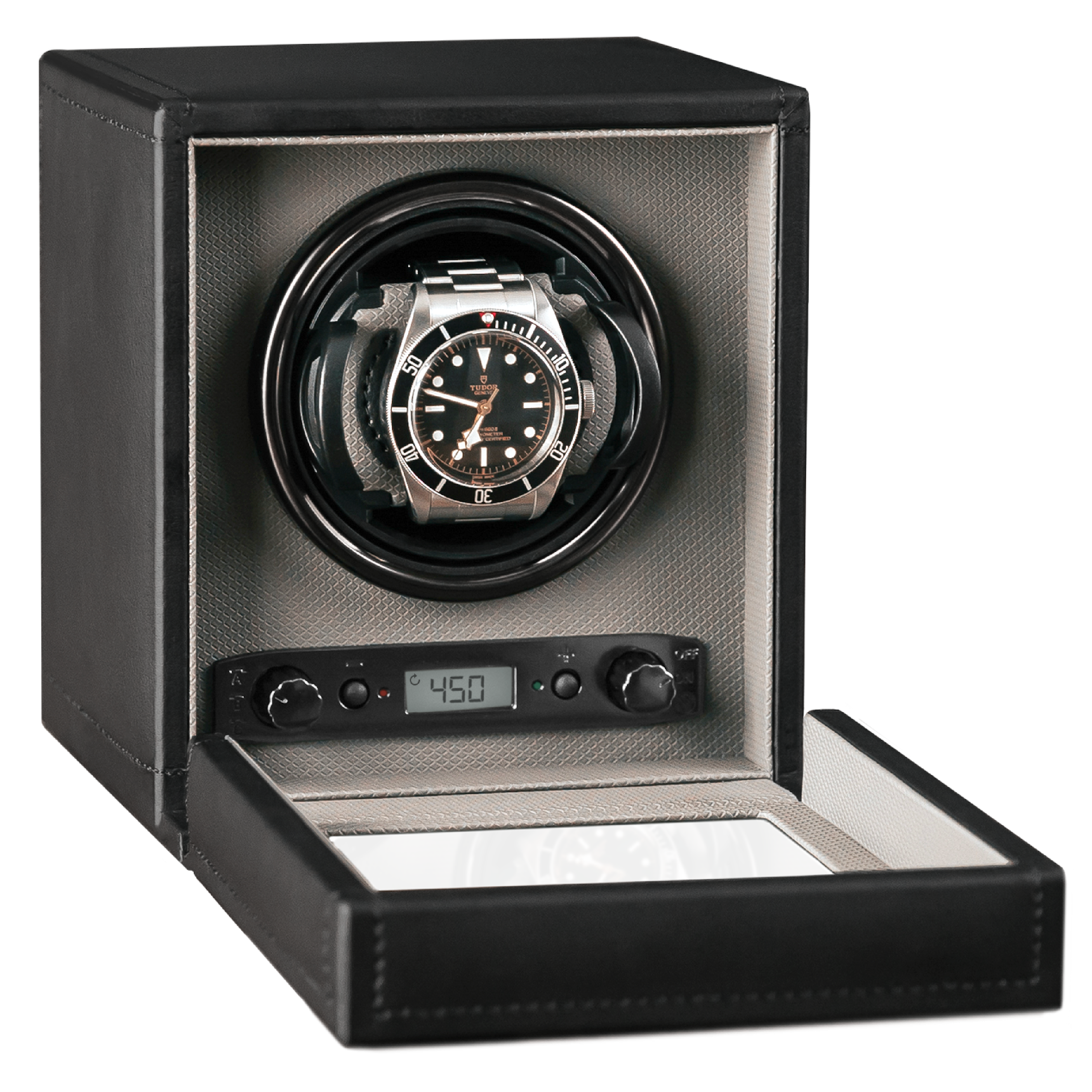- - An accurate hygrometer reading is essential to storing your cigars effectively.
- - Different locations in your humidor will have different humidity levels.
- - If your hygrometer seal is bad, outside air will compromise its accuracy.
- - Hygrometer readings can be affected by outside air and their placement inside the humidor.
- - Analog hygrometers are more likely to produce an inaccurate reading than digital.
Recently, we chatted with Ian Bennett from Klaro about humidor design, and he professed the importance of hygrometer placement and why it matters. He empathized with the many cigar enthusiasts who end up purchasing a cheap humidor with a faulty, questionable, or poorly-located hygrometer, effectively voiding the functionality of their humidor. Those owners face the daunting if not impossible task of dialing in the appropriate humidification levels for their cigars.
This aggression will not stand, man.
Hygrometers for humidors have earned a less-than-trustworthy reputation among some humidor owners. And while the hygrometer reads one thing, the smoking experience and the condition of their cigars is something else. Should you trust yours?
We wanted to take a deeper dive into hygrometer placement to help buyers better evaluate humidors. Otherwise, you will fight an uphill battle against a structural root cause – not user error.
But first: If you’re just getting started learning about humidors, we recommend checking out our comprehensive humidor overview that provides everything you need to know about humidors and storing your cigars to give you a good foundation as we discuss the hygrometer and its placement.
The Importance of Hygrometers for Humidors
The function of your humidor is to maintain optimal climate conditions for healthy cigar storage. This ought to be fairly straightforward task — especially with the help of a hygrometer.
Hygrometers measure the relative humidity of the air inside your humidor. Relative humidity is the water vapor content of air, indicated by percentage. So a reading of 100% relative humidity means complete saturation.
We keep humidors between 65-72 percent relative humidity, depending on preference. This zone prevents mold growth without causing damaging dryness. You might want cigars stored at higher or lower humidities (within this range) for aging purposes, or depending on the type of cigar.
In general, 65-72 percent reflects the approximate humidity levels of the tobacco barns of South America where tobacco ages before being wrapped.
Without a hygrometer, it's difficult to know where your cigars stand, humidity-wise. And it makes humidity adjustment for aging processes nearly impossible. You’re left with guesswork, the pinch test, trial-and-error, and a lot of wasted cigars.
With a hygrometer, you can dial-in the right humidity levels by adjusting your humidor and seeing the results. On Klaro humidors, you can add humidor solution to increase humidity, or follow a series of steps to lower your humidor humidity.
Hygrometers on humidors come in two different forms–digital or analog–and you should be able to determine yours by whether it has a digital screen or a physical needle. We discuss these two types in more depth later, but they share one key similarity: if they aren’t able to take an isolated reading of the internal humidity levels of your humidor, you won’t get a good reading.
Without an accurate humidity reading, you’re out of luck controlling how your cigars are stored.
Where Is the Hygrometer Located on My Humidor?

Hygrometers, analog or digital, are typically located inside the humidor or are built into its structure. Built-in hygrometers feature an internal sensor with a front-facing screen or needle reader. This decreases how often you have to open your humidor to check the levels and prevents outside air from affecting the reading. For hygrometers built into the humidor, the seals are especially important so no outside air corrupts the reading.
For hygrometers located inside the humidor, placement is key. Your humidor, depending on its size, will have different humidity levels at different locations in the humidor. The difference is usually minimal, but it can still be relevant – especially if it’s near your humidification source (gel pack, humidor solution, or humidor pack).
Use pocket hygrometers in different locations throughout your humidor to see the variation of humidity levels.
Pocket hygrometer or two can be a helpful tool as you test the accuracy of your built-in hygrometer. These are fairly affordable and you can place them anywhere in your humidor to test the humidification levels and compare.
The Problem with (Most) Hygrometers for Humidors
Just because the hygrometer is giving you a humidification reading you like (65-70 percent) doesn’t always mean you can trust it as accurate. That reading might not be representative of the actual humidification levels. This problem can be caused for a variety of reasons, from a faulty hygrometer to a poorly placed sensor to the placement of the hygrometer itself.
To understand better, let’s look closer at analog and digital hygrometers to understand why they fluctuate.
Analog Hygrometer for Humidors
Analog hygrometers are notoriously problematic when determining an accurate reading. With analogs, you should expect a 10% margin of error. The better the quality of your analogy hygrometer, the better your chances of an accurate reading. But the mechanics involved make it more prone to error.
Digital Hygrometer for Humidors
While analog gets a bad rap for inaccuracy, the truth is that many digital hygrometers aren’t always that much better, and those problems generally originate with faulty seals.
If you have a digital hygrometer built into the wall of your humidor, the sensor is on the inside of the humidor, taking an internal reading. If, however, the outward-facing hygrometer isn’t sealed properly, air from outside the humidor can compromise the reading.
Without proper rubber gaskets to seal the hygrometer from the outside airflow, you lose the functionality of the hygrometer – which is to provide an isolated, unaffected measurement inside the humidor.
Here’s a test: simply blow on the screen of your digital hygrometer from the outside. If there is a fluctuation in relative humidity, that means the additional airflow is somehow affecting the sensor’s reading. Not good.
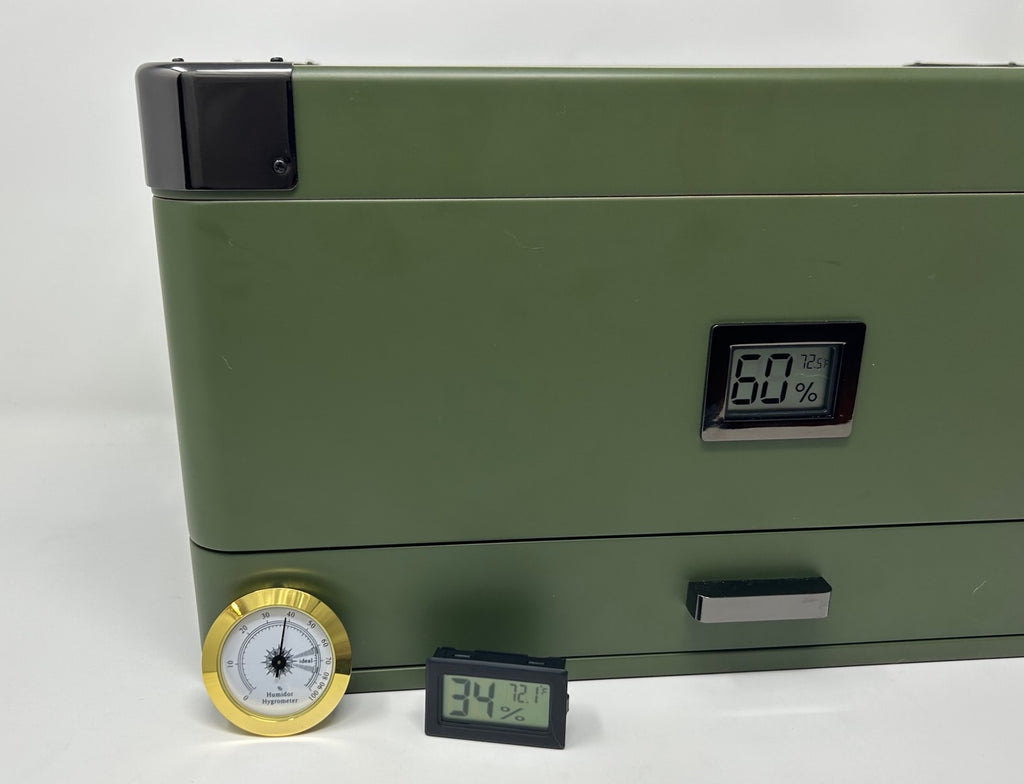
Sensor Placement
Consider where the sensor is located and the type of fluctuation that may occur. Placed far from the humidifier, and the reading will reflect lower humidification levels. Too close to the humidifier, and the sensor is likely to detect higher humidity levels. Placed at the top or bottom of a deep humidor? It's likely relative to its proximity to the humidifier.
Each humidor will have a sweet spot where the hygrometer can take an accurate, representative reading of the air your cigars are consistently exposed to.
When discussing Klaro humidor design with Ian Bennett, he mentioned a design fix they implemented early in the development of some of their iconic humidors: the need to extend the hygrometer’s sensor further into the humidor to take a more representative reading. You can see their most recent approach to this issue with the placement (and mobility) of the hygrometer in the new KOBI humidor: You’ll notice that the hygrometer is inside the humidor, at a middle depth, and can be moved across that plane based on where you have your cigars stored.
This is an example of proper hygrometer placement so the sensor is taking the most accurate reading possible.
Is the Problem Always the Hygrometer?

When you’re having trouble dialing in the right humidity levels for the perfect smoke, the problem is not always the hygrometer or a faulty reading.
If the humidification levels are too low, you could be dealing with an insufficient humidification source – like an old humidor pack or a low solution levels. In other scenarios, the cedar thickness of the humidor is too thin, not allowing the humidity to balance as you add or remove cigars from the collection.
The humidor might be placed near sunlight, affecting the temperature. It might be overfilled with cigars, reducing the effectiveness of the humidor humidifier. You might be opening the lid too often, or the lid seal isn’t strong…
Any number of things can affect the humidification reading–including your hygrometer.
Tobacco Nerd Note
Should you calibrate your hygrometer? Calibration restores your hygrometer to its baseline reading, ensuring you are getting an accurate measurement. There are a couple of different ways to calibrate your humidor, but this can be a delicate process that’s tough to get right. All Klaro humidors are calibrated through a rigorous process to ensure you are set up for success. Really, you should only consider calibration on your own if you are experiencing huge fluctuation. Otherwise, it’s difficult to get right.
Getting the Best Humidor Performance
By far, the most important action you can take to get the best humidor and hygrometer performance is to regularly check your humidity reading and adjust components as needed. Make use of secondary hygrometers to keep your built-in unit honest, and always incorporate the pinch test before smoking a cigar.
Keep experimenting, and get to know your humidor. Your humidor is a dynamic environment that will fluctuate based on a series of factors. There’s going to be some trial and error – just hopefully not at the cost of fine tobacco. The more you learn about your humidor and hygrometer, the better and more consistent you’ll get at regulating humidity levels.

